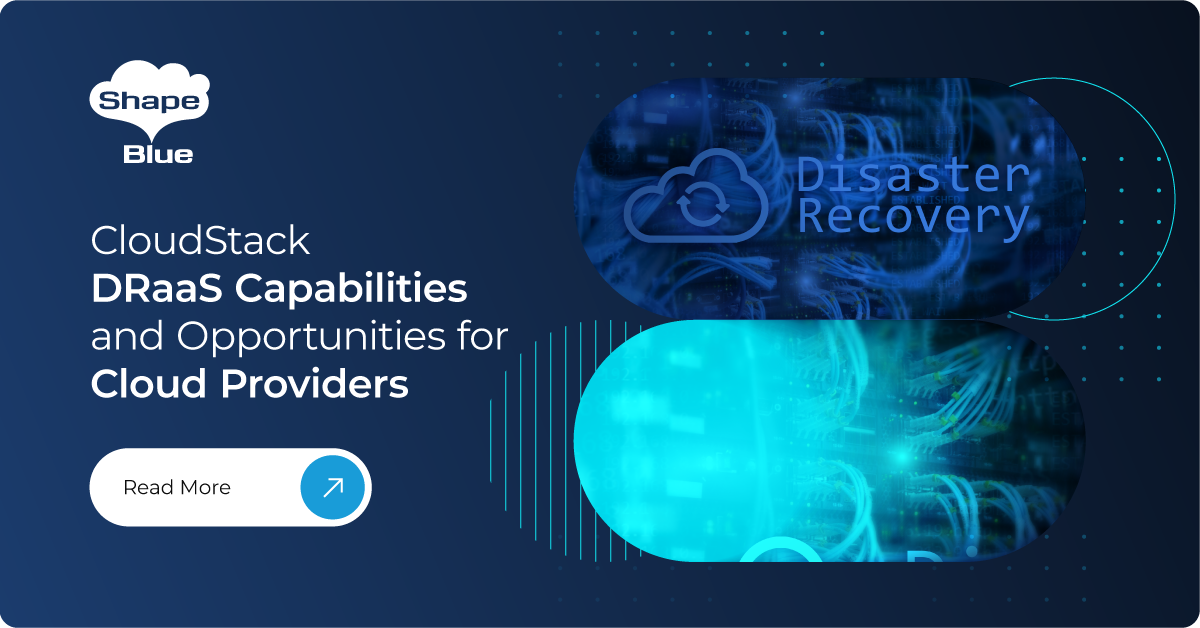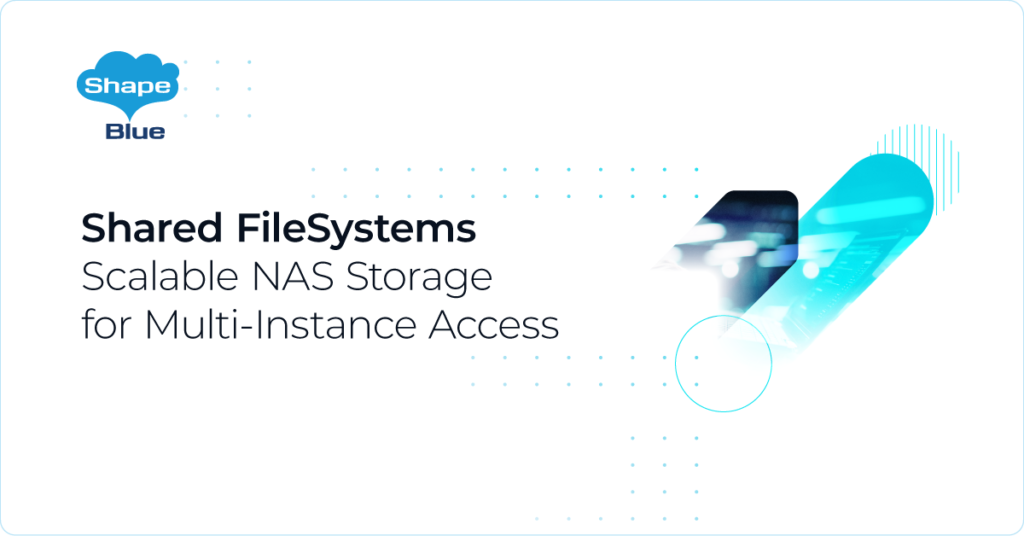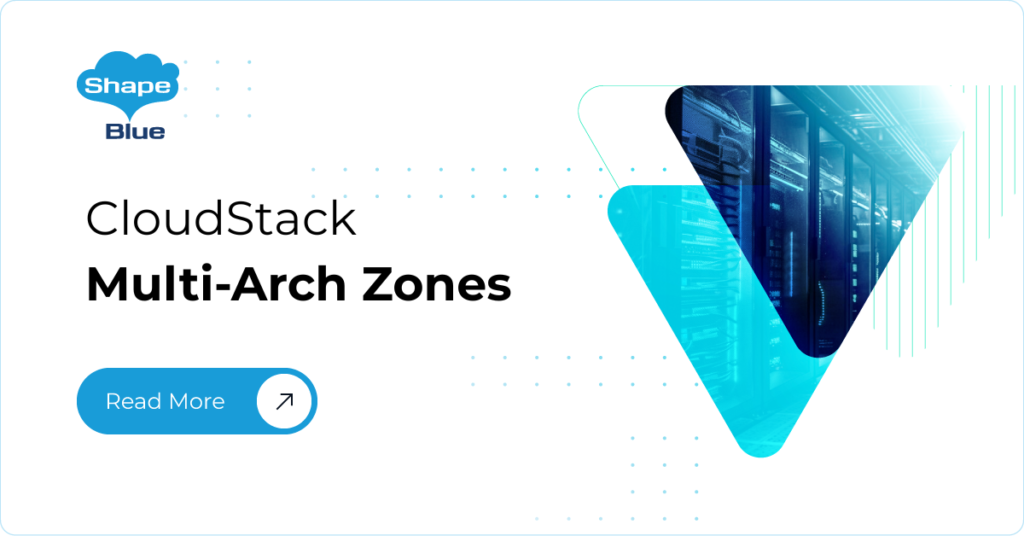A Disaster Recovery (DR) solution is a must for most businesses. Not only for security and compliance reasons but also to maintain service availability, data safety and business continuity. The increasing complexity of IT infrastructure, combined with a demand for more cohesive and efficient solutions, has led to a growing number of service providers offering Disaster Recovery as a Service (DRaaS). This solution can now be integrated at the IaaS level, offering a more comprehensive and automated approach to disaster mitigation.
Apache CloudStack 4.19 introduces features that enhance its DR capabilities, which are suited especially to the needs of cloud providers. This approach delivers efficient measures to restore systems post-disruption and empowers users with flexibility and control, allowing them to adapt their individual DR strategy to their operational needs.
CloudStack DRaaS Strategy
Effectively addressing disaster recovery in cloud computing goes beyond mere post-incident responses. It involves a comprehensive set of strategies categorized into two primary pillars:
| Pillar | Objective | CloudStack DRaaS Role | Other Examples |
| Preventive Measures | Anticipate and prevent potential incidents before they occur. | Provides a replication layer, ensuring data is copied across remote Zones. This guarantees the availability of secure data copies, reducing the risk of data loss. | Regular system maintenance, patch updates, and network monitoring. |
| Corrective Measures | Rectify and restore systems to their normal state after a disaster has occurred. | Enables swift restoration from remote snapshots, ensuring minimal downtime and business disruption. | Data restoration from backups, system rollbacks, and application failovers. |
CloudStack DRaaS provides an abstraction layer for replication of snapshots from Instances disks to remote zones. This ensures that in the event of a failure, secure copies are readily available in alternate zones for quick restoration. However, it’s crucial to understand that it doesn’t encompass the entirety of disaster readiness. A holistic approach to disaster recovery combines CloudStack’s DRaaS capabilities with other essential technologies and best practices. This includes anti-virus solutions, intrusion prevention and detection systems, adherence to industry best practices, timely system updates, network monitoring and alerting systems. Together, these elements create a robust and resilient infrastructure ready to tackle unforeseen challenges and ensure business continuity.
Apache CloudStack’s Vision for DR Capabilities
Apache CloudStack enables service providers to also implement DR on the infrastructure layer, in addition to the traditional approach of ensuring DR capabilities on the application layer. CloudStack DR Capabilities Feature stands out due to its emphasis on user experience and operational efficiency of cloud providers.
The feature enables service providers to be able to deliver:
- Multi-Zone Data Replication: Recognizing the critical importance of data availability, this feature introduces a mechanism that enables the copying of volume snapshots to multiple zones, utilizing the Secondary Storage VM, providing data replication that can be employed in disaster recovery scenarios (DRaaS). This is complemented by a user interface that displays a list of zones where a snapshot is present and the status of the copy, similar to template registration.
- Rapid Disaster Recovery: Through the API or directly through the user interface, users can quickly retrieve their copies ensuring that disk volumes are preserved and attributes such as name, compute offering and networks are maintained, with the flexibility to be modified as desired.
Strategic Opportunities with Apache CloudStack’s DRaaS
Apache CloudStack’s enhanced DR capabilities present cloud providers with a dual advantage: they can offer superior services to end-users while also realizing tangible business benefits for themselves.
From the End-User perspective, the key technical advantages include:
- User-Centric Flexibility: Apache CloudStack allows the end IaaS users to choose to replicate their data disk across multiple zones, giving them direct control over their DR strategies, without a need to rely on the service provider to deliver a ready solution.
- Seamless Data Mobility: Users can easily move a disk snapshot to another zone, providing flexibility in resource management.
- Rapid Disaster Recovery: In the event of a disaster, users can quickly convert their stored remote snapshots back into operational Instances, ensuring business continuity.
From cloud providers’ perspectives, the primary business advantages include:
- Market Differentiation: In a saturated cloud market, cloud providers need to offer services that stand out. Apache CloudStack’s DRaaS solution does precisely that. It’s not just about data recovery; it’s about end-to-end business resilience.
- Building Customer Trust: A robust DRaaS solution can significantly enhance reputation. It positions them as not just cloud providers but as trusted partners.
- Expanding Revenue Streams: With the increasing awareness of data threats, DRaaS can be a lucrative offering. Cloud providers can package it as a premium service, targeting a market segment that understands and values the importance of data protection and business continuity.
- Enhancing Client Retention: By offering a DRaaS solution that prioritizes user experience and operational efficiency, cloud providers can increase client loyalty. Satisfied customers are less likely to switch cloud providers, ensuring a stable revenue flow.
Taking advantage of these opportunities allows cloud providers to not only improve their existing services, but also set the stage for continued growth in the target market.
The evolution of disaster recovery has seen a significant change, with it now being integrated directly at the IaaS level. Apache CloudStack 4.19 introduces advanced DR capabilities for cloud providers, emphasizing user experience, operational efficiency, and flexibility. Its comprehensive strategy, covering preventive and corrective measures, ensures robust data protection and fast recovery. For cloud providers, leveraging these capabilities offers not only enhanced services but also distinct market advantages, strengthening their customers’ trust, expanding revenue opportunities, and ensuring a distinctive offering from their competitors.
Marco Sinhoreli is a seasoned Technical Marketing Manager at ShapeBlue, with over 25 years of IT experience. As an Apache CloudStack expert and committer, he specializes in creating and delivering technical marketing content that bridges the gap between technology and business. Marco has consulted major companies on implementing IaaS solutions with CloudStack, focusing on delivering cloud infrastructure that supports both immediate and long-term business needs. When he’s not diving into cloud solutions, Marco loves playing guitar, exploring new places, and staying updated on politics.





